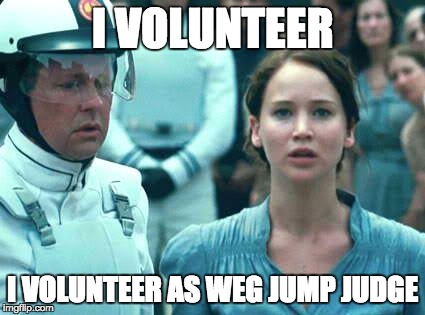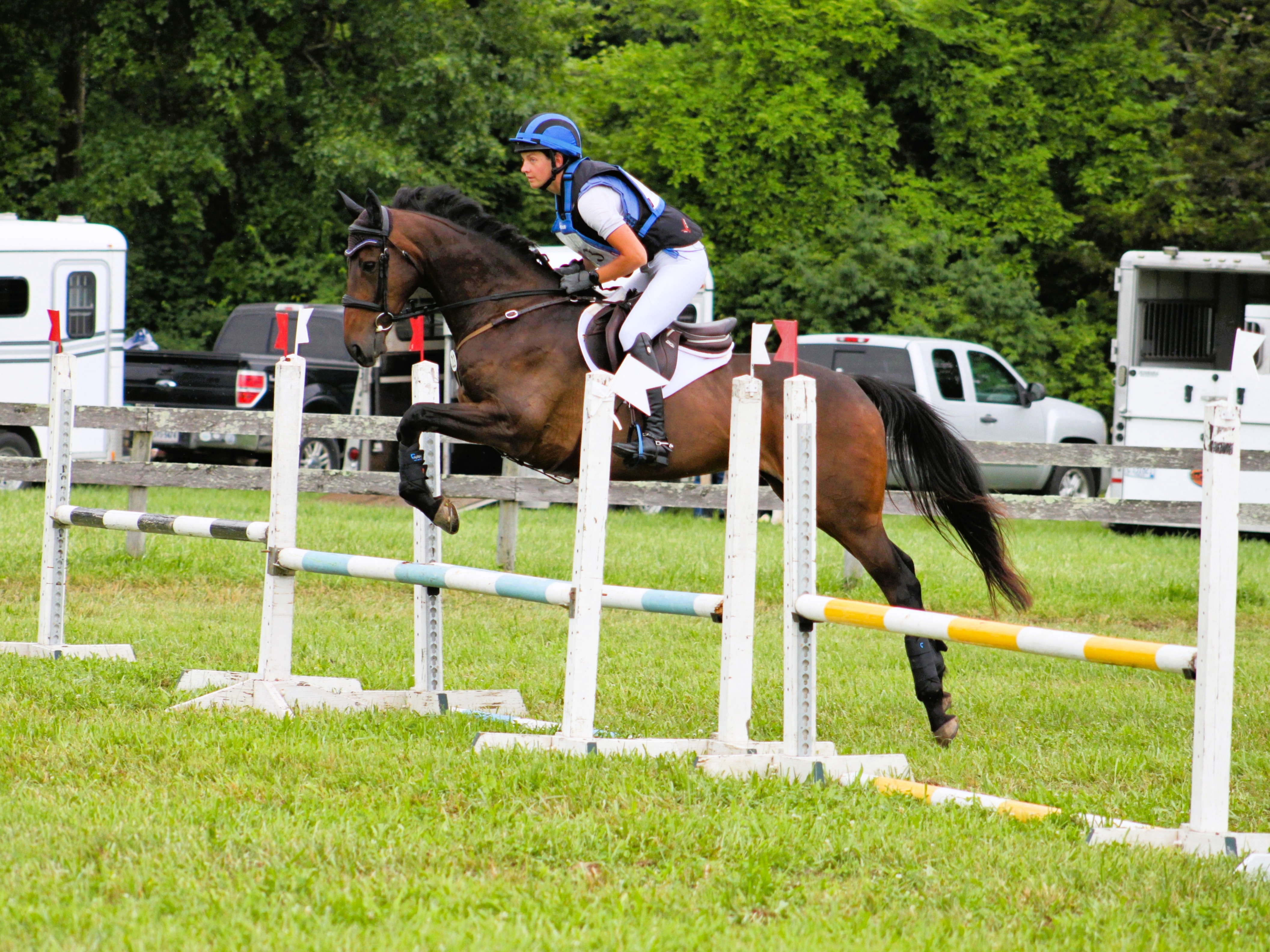Today William Micklem continues his articulate recap of a presentation by British Olympic dressage gold medalist Carl Hester to top British and Irish coaches. If you missed part one, read it here.

Carl Hester riding Nip Tuck, winner of the FEI World Cup Dressage Grand Prix Freestyle at Olympia in 2016. Photo by FEI/Kit Houghton.
Carl was asked about LDR (Low, Deep & Round) and the ongoing controversy about neck shape and head position. It is well known that Carl does not use rollkur and hyperflexion but in recent times even he has been criticised on online forums for stretching the neck down. He replied that he didn’t like the phrase LDR and that the important thing was that the neck stayed supple and natural, with the area around the bottom of the throat latch staying open and the horse staying happy in the mouth.
“Daily work should be structured into three parts with the intense learning phase sandwiched between long, loose periods of stretching and relaxation in warm-ups and cool-downs. During warm-up and cool-down, the horse should be taught or encouraged to stretch his neck out and down without sacrificing a balanced frame. This evolves as the horse gets physically stronger and more educated. Also be willing to stretch a horse regularly throughout your training sessions to relax him and reduce the risk of tension.”
“If a horse won’t stretch at the beginning of a session, work on a contact sooner, then stretch when he is ready, as there is no point in riding on a loose rein with the horse going badly or unbalanced. Valegro was seven before he learnt to stretch. When a horse is tired, he’ll try to stretch down. Let him do it for a while, as it’s something you want to encourage.”
It was noticeable that the instruction Carl repeated most to Charlotte was ‘lighten the rein.’ After every more testing exercise he said it. Not only was this used as a reward but it is a central part of ensuring the horse is not held together and has a soft and natural position of the head and neck. Then this is combined with riding forwards: “If your hand is not in front of the saddle it looks like you are riding backward, whereas if your hand is in front of the saddle, you will ride forward and get forward movements. So many ride with the reins too long. The forward hand will help you ride to the bit, not from the front to the back.”
Rollkur and hyperflexion
In any sport methodology has to evolve. The essential search for incremental improvements inevitably involves change and an open mind, but this is not something that many in dressage training find easy, particularly as it is a sport that is full of mandatory ‘classical’ principles, revered truisms and largely subjective judging. But as Carl says “There is always someone who will teach you something new about horses, so remain forever open minded.”
Whether we are concerned with the welfare or performance of the horse the development of the natural paces and outline of the horse is a key performance goal. But this is often not easy or quick, so it is not a surprise that so many resort to gadgets or strength to get a quicker result. A result that is rarely long lasting or fulfills the potential of the horses trained in this way or guards the welfare of the horse.
In 2015, at the 11th International Society of Equitation Science (ISES) Conference, held in Vancouver, the results were presented of a review of 55 scientific articles dealing with the effects of head and neck position on various types of horses’ welfare and/or performance. The review was carried out by Uta Koenig von Borstel, PhD, BSc, a professor at the University of Gottingen’s Department of Animal Breeding and Genetics in Germany, and Paul McGreevy, BVSc, PhD, MRCVS, MACVS (Animal Welfare), Cert CABC, animal behaviour and welfare science professor at the University of Sydney.
The review authors concluded that although some hyperflexion can lead to more expressive movements “the presumed gymnastic benefits are by far outweighed by both reduced equine welfare and undesired gymnastic effects.” Eighty-eight percent of these studies indicated that hyperflexion negatively impacts welfare via airway obstruction, pathological changes in the neck structure,impaired forward vision, and stress and pain due to confusion caused by conflicting signals and the inability to escape pressure.”
Following subsequent discussion by the Fellowship it was decided that we should do more publicly as a group to support humane dressage training methods, such as practiced by Carl Hester and Charlotte Dujardin, and more to stop the use of hyperflexion and rollkur.
Rising trot is invaluable
Just as both William Fox Pitt and Michael Jung do in eventing dressage training Carl regularly uses rising trot in several situations. “Rising trot can help the horse establish and maintain the right rhythm, and as a test of your training technique go into rising trot and drop your reins. Your horse should stretch down, but if he sticks his head up, something needs adjusting in your training.”
In addition its ability to free up the horse’s back and open the stride makes rising trot a good mode for work with young horses, and for medium and extended trot in horses of all ages. He also encourages riders to experiment with rising trot in lateral work, again because of the suppleness it facilitates in the horse’s back. “It’s not a sin to rise in your lateral work,” he says. “Watch jumper riders and you see they take a position over the knee and their horse is through and soft in the back. Then you see a dressage rider’s upright and strong position and the horse is bracing in the back.” (NB see show jumpers Marcus Ehning, Peder Fredricson and Ben Maher.)
In the past I have also seen Carl get riders to alternate between standing in the stirrups and sitting in the saddle for several walk steps. The aim is to relax the seat and note the impact on the horse’s back and he does the same in trot and canter. “Alternating a sitting and standing position is a good test of whether the rider’s seat is constricting the horse’s stride.” At times he even has riders use rising trot to work on passage. “You’ll get a slightly higher trot because you’ll draw him up with your upper body,” Carl explained. “It will help take the horse up and forward with you.”
Mental preparation & use of snaffle
During the morning Carl was asked two other unusual questions. The first about his mental preparation for competitions and the second about his views on allowing the use of snaffle bridles as an option in international dressage.
Carl said that he didn’t need additional help with his mental preparation as what he already did worked for him. A ‘no stone unturned’ preparation combined with a ‘just another day at the office’ attitude and a supportive team. However he said that the regular use of a sports psychologist was a valuable tool for Charlotte and he could tell by her riding if she had recently had a session. At a competition Charlotte needed her own space: “She needs to hide in a darkened lorry while other students need to have constant positive support. In most cases mental problems are about a lack of confidence, so we do what each rider needs as an individual to maintain confidence.”
Carl did not hesitate when saying that he did think snaffle bridles should be allowed as an option in international dressage. “I think most riders think the same but Kyra Kyrklund, who I have great respect for, believes that high level dressage should be ridden in a double bridle.” It was disappointing that Carl said he would not be pressing for a rule change regarding the use of snaffles while he was still riding, but there is no reason why other high level trainers and riders should not try and influence the FEI if we feel strongly enough about this.
Doing it well but keeping a balanced life
It was obvious during the morning that all the horses went either very well or wonderfully well … no surprise there! They were allowed to do quality work by the exercises being sufficiently easy and progressive … for example a few steps of walk before halt for the young horses, not worrying about medium trot until the trot can be collected, going a little forwards in piaffe to begin, and usually the command ‘lighten the hand’ after any more demanding moments, followed by an easier exercise. “The key to good training is small improvements, as this makes horses very trainable in the long term,” he explained.
In addition he liked his horses to compete at a lower level than the work they were doing at home so it would be easy for them. Two weeks before championships at any level they work specifically at riding the specified tests as he doesn’t see anticipation as a problem. “I don’t want the horses to have any surprises at the competition.”
All the work was what one would expect from his horses, especially natural paces, natural extensions that truly came from the hind leg, and piaffe that truly ‘sat.’ Training them this way he expected them to make Grand Prix level by the time they were 10. He made it clear that there was no point in any horse going badly, but if a flying change was incorrect he never punished any horse. “Punishment is more likely to create tension and long term problems. Just set it up properly and then do it again. We make too much fuss about changes. They will get the idea.” He showed most horses doing their changes along the boards to help the straightness.
The stable management is also done wonderfully well. To make this possible he invests in his grooms. “I have five staff for 18 horses, so we can do it properly. That’s why Charlotte and I can only ride four days a week, because we can’t take a wage so we teach on the other days. But I think it is worth it to pay attention to the detail and ensure we treat each horse as an individual.”
As we watched Carl present his horses various dogs came in and out of the school and at times lay down on the outside track, while outside a flock of Guinea fowl scampered around the outdoor arena. This is all part of the laid back attitude and lifestyle that is an integral part of Carl’s success. He is as passionate about dressage as anyone but he is also aware that when working with animals and people a rigid and totally driven approach will never get the best out of them. He sees the guinea fowl and the gold medals as two sides of the same coin. “I don’t work so hard that I don’t have a life. Always remember that. Never get so busy making a living that you forget to make a life. I love that saying. It is so true.”
Saving lives and Carpe Diem
For many years it has been my opinion that some dressage training methods have been at least a contributory factor in the fatalities in eventing. Dressage training that may be considered acceptable by some but is mechanical and forceful, looking for submission rather than acceptance, and in the process taking away the horse’s ability to react naturally and use their ‘fifth leg’. Chris Bartle, among others, has also spoken about this. The joy is that Carl’s work and training philosophy is ideal for eventing dressage, and of course show jumping as well.
However in recent times I have listened to two elite dressage trainers at National conferences who were preaching from a different song sheet. A song sheet that was more complicated and less appropriate for eventing or show jumping. Are all stakeholders doing enough publicly to highlight this difference, making the the right type of dressage an integral part of the drive for safer cross country riding? We need to seize the moment because currently we can stand on the giant shoulders of Carl Hester and make our case with renewed confidence and power.
In terms of seizing the moment I took the opportunity to show Carl a horse’s skull to remind him of the shape of the jaws and position of the exit points of the nerves. All of which is confirmation of the unacceptability of cranked nose bands. Then I fitted a Micklem bridle on one of his talented horses, who has had a long term history of failing to accept the bit and rein contact. Carl sent me a text two weeks later. It simply said “it worked immediately.” It was my very best Christmas present.








































